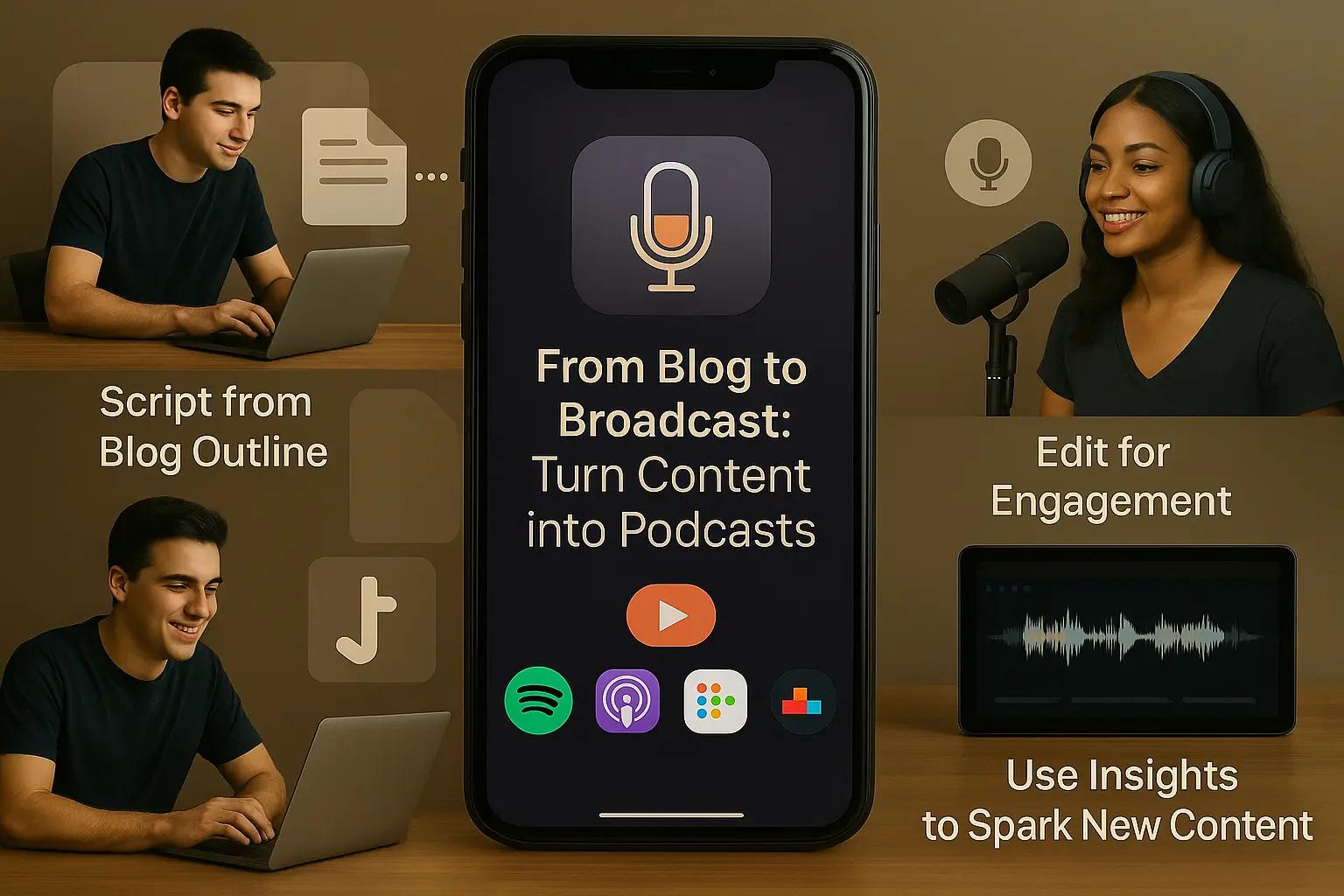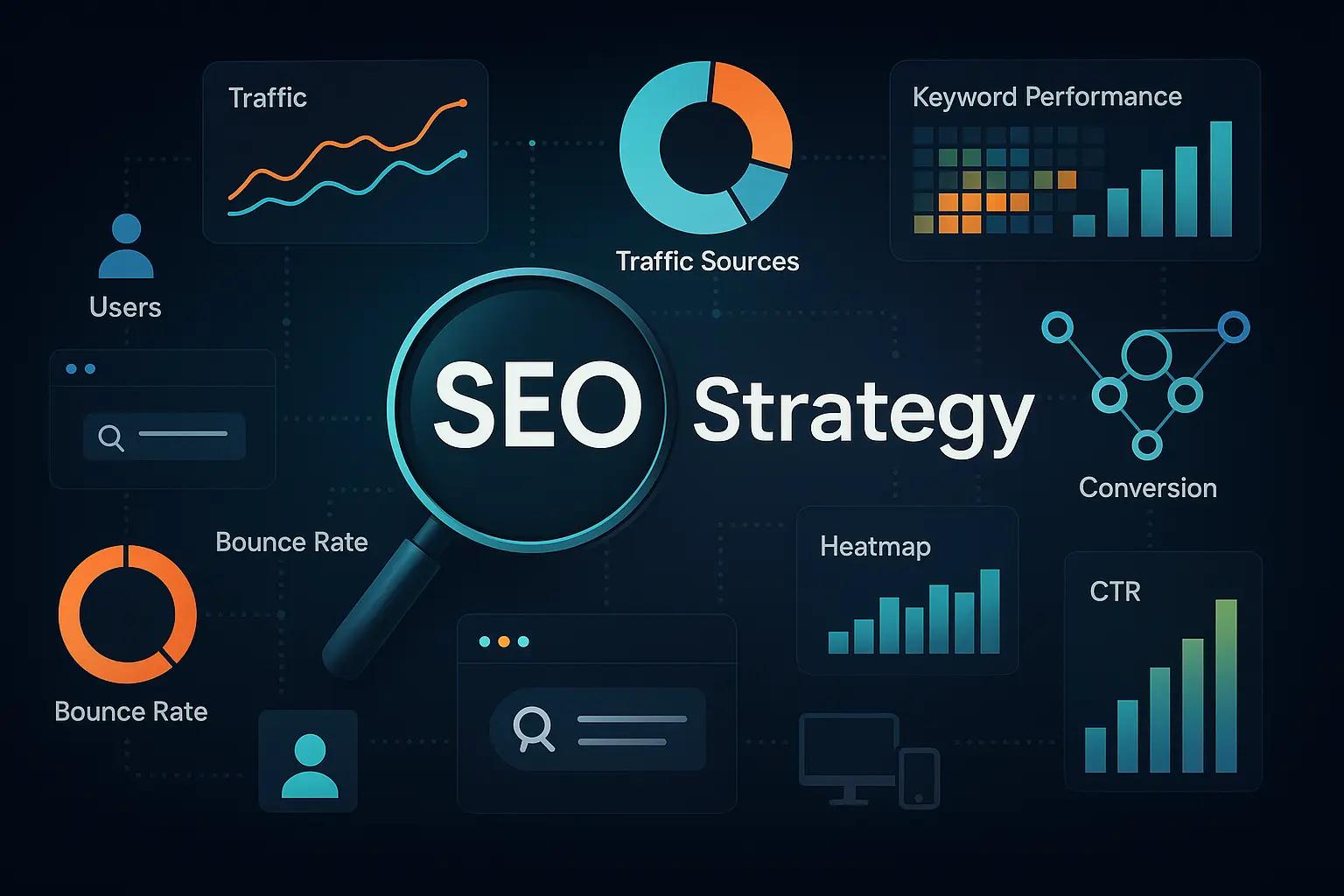
In today's digital world, repurposing content is key for businesses. It helps them get more out of their content. By changing how they share it, brands can reach more people and keep their message strong.
Repurposing content is more than just reusing it. It's about making your content fit different places and people. This way, marketers can get more value from what they already have. And they can keep their brand's message clear.
Creating great content isn't about making a lot of new stuff. It's about smartly using what you already have. Learning how to repurpose content well can make your marketing more effective and powerful.
Key Takeaways
- Repurposing content maximizes marketing efficiency
- Multiple content formats increase audience engagement
- Strategic adaptation extends content lifecycle
- Cost-effective approach to content marketing
- Enhances brand visibility across different platforms
Understanding Content Repurposing: A Strategic Approach
Content repurposing is a key strategy for businesses to boost their digital marketing. It turns old content into new formats, reaching more people and adding value.
To optimize content well, you need a strategic mind. It's not just about sharing the same content everywhere. It's about making it fit for different audiences and platforms.
Benefits of Content Repurposing for Business Growth
- Expands audience reach across multiple channels
- Increases content marketing efficiency
- Reinforces key messaging
- Improves search engine visibility
- Maximizes return on content investment
Key Elements of Successful Content Transformation
| Strategy | Implementation |
|---|---|
| Audience Understanding | Analyze demographic preferences |
| Format Selection | Match content to platform strengths |
| Consistency | Maintain core message across formats |
Common Challenges in Content Repurposing
Content curation comes with its own set of challenges. Keeping quality while changing content needs careful planning and creativity. Marketers must find a balance between being original and repurposing to keep people interested.
Think of each piece of content as a flexible asset. It can be changed to meet different audience needs and marketing goals.
Content Repurposing, Content Marketing Strategy, SEO: The Perfect Trio
Digital marketing success depends on smart content optimization. Combining content repurposing, content marketing strategy, and SEO is key for businesses wanting to be seen online.
"Content is king, but strategy is the kingdom." - Digital Marketing Insight
Good content marketing needs a wide approach. Repurposing content helps brands use their digital assets better and boost SEO.
- Expand content reach across multiple platforms
- Reinforce key messaging
- Improve search engine indexing
- Optimize keyword targeting
SEO gets a big boost from repurposing content. By changing existing content into new formats, businesses can:
| Content Format | SEO Impact |
|---|---|
| Blog Posts | Increased organic search visibility |
| Infographics | Higher engagement and backlink potential |
| Video Content | Enhanced user interaction signals |
Smart content optimization turns one piece of content into a big marketing tool. Intelligent repurposing connects different digital channels, making a strong online presence.
Transforming Blog Posts into Visual Content

Visual content is now a key tool for sharing information. Turning blog posts into engaging visuals can boost audience interaction and reach.
Today, people want quick, easy-to-digest visuals. By looking at your blog content in new ways, you can make it fresh and exciting again.
Creating Infographics from Data-Heavy Articles
Infographics are great for making complex data easy to see. Good infographic design means:
- Finding the most important stats
- Choosing simple, clear designs
- Using colors to draw attention
- Keeping your brand look consistent
"Data becomes more memorable when it tells a story through visual design." - Data Visualization Expert
Converting Blog Content into Social Media Graphics
Social media needs short, catchy visuals. To make blog content shareable, try:
- Highlighting key quotes
- Making carousel graphics
- Designing images for each platform
- Choosing fonts that grab attention
Designing Presentation Slides from Blog Posts
Slides can turn blog content into engaging presentations. Important steps include:
- Breaking down content into easy parts
- Using visuals instead of too much text
- Creating a story flow between slides
- Adding interactive elements
By turning written content into visuals, businesses can get more out of their efforts. They can also share their content in more ways.
Leveraging Video Content Opportunities
Video content is a big deal for repurposing, offering fresh ways to make old material exciting. Brands can give new life to written content by turning it into videos. These videos grab attention and boost engagement.
There are several ways to transform video content:
- Turn long blog posts into bite-sized explainer videos
- Make complex data into animated infographics
- Create tutorial videos from step-by-step guides
- Turn research articles into narrative-driven content
"Video content allows brands to communicate complex ideas visually, making information more accessible and memorable." - Digital Marketing Insights
It's important to tailor video content for each platform:
- YouTube: Detailed, educational content
- Instagram: Short, visually compelling clips
- TikTok: High-energy, trend-driven videos
- LinkedIn: Professional, industry-focused narratives
By repurposing content into videos, businesses can grow online, engage more people, and reach potential customers in new ways.
Podcast Creation from Written Content

Turning written content into podcasts is a new way to engage audiences. Podcasts give a fresh spin to old content, making it exciting again.
To make written content into podcasts, you need a plan and creativity. It's about changing written ideas into stories that listeners can enjoy.
Audio Content Production Best Practices
- Script your podcast using existing blog post outlines
- Focus on conversational tone and natural language
- Edit for clarity and engagement
- Use professional recording equipment
"Great podcasts transform written content into intimate storytelling experiences."
Maximizing Podcast Distribution Channels
Getting your podcast out there means using many platforms. Here are some important ones:
- Spotify
- Apple Podcasts
- Google Podcasts
- Stitcher
Repurposing Podcast Episodes into Blog Posts
Make your content go full circle by turning podcast transcripts into blog posts. This way, you reach more people and keep your content fresh.
Pro tip: Use podcast insights to generate new written content ideas and maintain a continuous content creation cycle.
Social Media Content Adaptation Strategies
Making great content for social media needs a smart plan. You must know how to share and promote your content. Each platform wants you to talk in its own way to reach its people.
Good social media content needs a few key steps:
- Know what each platform's audience likes
- Make content that looks good on each platform
- Change the length and style of your content
- Use special features each platform offers
Every social platform is different:
- LinkedIn: It's all about professional, data-rich content
- Instagram: It loves visual stories and short videos
- Twitter: It's all about quick, fun posts
- TikTok: It's all about short, creative videos
"Good content promotion means speaking each platform's language while staying true to your brand."
Content syndication gets even better when you share your content smartly across many places. This way, you reach more people and get more engagement without making too much content.
Here are some tips for making your content fit each platform:
- Look at what works on each platform
- Make graphics that fit each platform
- Change how you write and how long your content is
- Use what each platform offers
By using these strategies, brands can turn their content into fun social media experiences. These experiences help people interact and grow your audience.
Email Newsletter Optimization Through Content Repurposing
Email newsletters are a key way to improve content and share it with more people. By reusing old content, businesses can send out messages that really speak to their audience.
Turning old content into exciting email series takes careful planning. It's not just about sharing the same stuff again. It's about making it fresh and interesting for different groups of people.
Segmenting Content for Targeted Engagement
To really connect with your readers, you need to know who they are. Think about dividing your audience into groups based on:
- What they're interested in
- How they've interacted with you before
- How often they engage with your content
- Who they are
Creating Compelling Email Series
Make email courses out of big guides. Break down big ideas into smaller, easier-to-digest pieces. This includes:
- A brief introduction
- A deeper dive into the topic
- How to use what you've learned
- Even more advanced tips
"Your email newsletter is not just a communication tool, but a strategic content optimization platform."
By reworking old content for email, marketers can get more people involved, boost sales, and make the most of what they already have.
Content Distribution Channels and Platform-Specific Optimization
Effective content distribution is key to digital marketing success. Brands need to promote content on various platforms to reach more people. Knowing each platform's unique traits helps create content that speaks to different audiences.
To succeed, a multi-channel strategy is essential. Each platform requires its own approach to grab attention and spark meaningful interactions.
- Owned Media Channels
- Company website
- Corporate blog
- Email newsletters
- Earned Media Channels
- Social media platforms
- Guest posting opportunities
- Industry publications
Creating content for each platform means knowing what each audience likes. LinkedIn users want professional, data-rich content. Instagram fans love visual stories.
| Platform | Content Optimization Strategy | Ideal Content Type |
|---|---|---|
| Professional, detailed insights | Long-form articles, industry reports | |
| Concise, engaging snippets | Short quotes, statistics | |
| Visual storytelling | Infographics, short videos |
"Content distribution is not about being everywhere, but being strategic about where your audience consumes content." - Marketing Expert
By using a smart content distribution plan, brands can spread their message wider. This boosts engagement and strengthens their online presence on many platforms.
Measuring Success and ROI of Repurposed Content
It's key to track how well repurposed content does. Digital marketers need strong ways to see the real effect of their work. This helps improve content and SEO strategies.
Success in content isn't just about how many views it gets. Marketers must look closely at analytics. This way, they can find out how well their content is doing.
Key Performance Indicators for Content Success
- Engagement rate across different platforms
- Conversion rates from repurposed content
- Time spent on page
- Social media shares and interactions
- SEO ranking improvements
Analytics Tools for Content Performance Tracking
Choosing the right analytics tools is crucial. Google Analytics, social media insights, and content tracking platforms give detailed data. This data shows how well your content is doing.
"Data drives strategic content decisions" - Marketing Experts
When checking content performance, focus on these key points:
- User interaction depth
- Traffic source analysis
- Audience demographic insights
- Conversion path tracking
By carefully looking at these metrics, marketers can make their content better. This ensures they get the most out of their efforts and improve how people engage with their content
Conclusion
Content repurposing is a key strategy for digital marketers today. It helps them make the most of their content marketing. By using existing content in new ways, businesses can reach more people and save resources.
To succeed in content repurposing, you need to know your audience well. Create content that works well on different platforms. A good strategy can make old content fresh and valuable again, boosting engagement and visibility.
Digital marketing keeps changing, and repurposing content helps you stay ahead. Brands that get good at changing content can save money and time. They also keep their message consistent across many platforms.
To make a smart content repurposing plan, you need creativity and a solid understanding of your audience. By always updating and rethinking your content, you'll keep your brand interesting and relevant in a crowded online world.

Custom video production at scale
Aneeverse covers all video needs whether you're telling your brand story, launching a product or running ads. Discover how we can help you scale.
